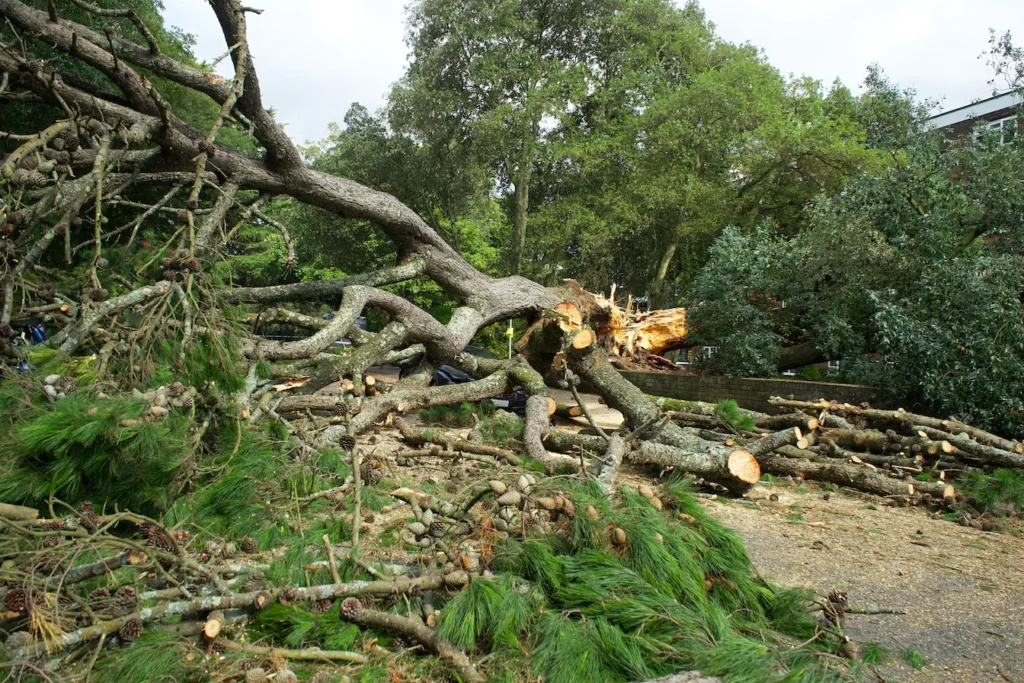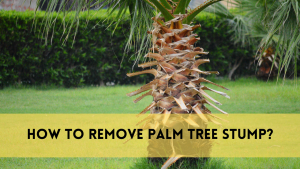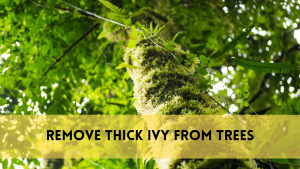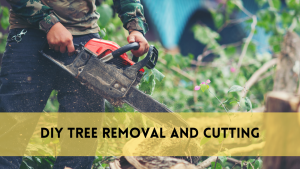Trees are not simply quiet onlookers of our lives; they assume a functioning and essential part in our current circumstance. They are nature’s life emotionally supportive network, giving us clean air, concealment, and a feeling of harmony. Trees battle environmental change by retaining carbon dioxide, discharge oxygen into the climate, and assist with keeping up with the natural equilibrium by giving territories to endless species. They likewise significantly affect our psychological and actual prosperity, making our urban communities and scenes more agreeable and solid. In metropolitan regions, trees offer a scope of advantages, including diminishing air contamination, moderating the intensity island impact, and working on general personal satisfaction. They go about as a safeguard against the unsafe impacts of contamination, lessen clamor contamination, and even increment property estimations. In a world confronting ecological difficulties like deforestation and environmental change, the meaning of trees couldn’t possibly be more significant.
Figuring out Stump Removal
Various Techniques for Stump Removal
Prior to digging into the difficulties and contemplations of establishing a tree where a stump was taken out, understanding the strategies for stump expulsion and their effect on the general environment is fundamental.
Stump Crushing
Stump crushing is one of the most widely recognized strategies for stump evacuation. It includes utilizing a specific machine to crush the stump down underneath the ground level.
While this technique actually takes out the apparent part of the stump, it normally leaves the underground root growth set up. The ground stump wood chips can be utilized as mulch or discarded.
Stump Expulsion the hard way
Now and again, especially with more modest stumps, the evacuation should be possible physically utilizing apparatuses like tomahawks, digging tools, and digging bars.
This technique can be work serious and may not totally eliminate every one of the roots.
Synthetic Stump Expulsion
Synthetic stump expulsion includes the utilization of synthetic compounds to speed up the decay of the stump. While this strategy is less intrusive, it can require a while to years to deteriorate the stump completely. The synthetic substances utilized ought to be maneuvered carefully and may not be appropriate for all conditions.
Effect of Stump Removal on the Dirt and Environmental elements
Soil Aggravation: Stump expulsion frequently includes digging and crushing, which can disturb the dirt and influence its construction.
Change in Soil pH: The decay of wood, particularly assuming that the stump is ground and chipped, can adjust the pH levels of the dirt.
Remaining Roots: On account of stump crushing, as referenced prior, leftover roots might stay in the dirt, possibly influencing new plantings.
Potential for Soil Disintegration: Soil disintegration can happen in regions where stumps have been eliminated assuming the site is allowed to be uncovered without appropriate ground cover.
Significance of Complete Stump Removal for Effective Replanting
While considering replanting a tree where a stump was eliminated, underscoring the significance of intensive stump removal is critical. The progress of your new tree to a great extent relies upon the successful evacuation of the old stump, its underlying foundations, and any lingering matter. Inadequate stump evacuation can prevent the development of the new tree and lead to root rivalry and primary issues.
Surveying the Stump Removal Site
Soil Quality and Condition
Soil Surface: Decide the dirt surface by looking at whether it’s sandy, loamy, or clayey. Loamy soil, which is a combination of sand, sediment, and earth, is by and large great for most tree species as it gives great waste and supplement maintenance.
Soil pH: Test the dirt pH to grasp its acidity or alkalinity. Many trees favor marginally acidic to impartial soils, so changing the pH assuming that essential might be required.
Soil Synthesis: Check for any unfamiliar articles or materials in the dirt, like stones, development trash, or roots left from the past tree. These can block root development and supplement assimilation.
Presence of Any Leftover Stump Pieces
Examine the site for any remainders of the old stump or its root foundation. In any event, while stump crushing or evacuation by hand was played out, a few little sections or roots might stay in the dirt. These remainders can obstruct the new tree’s root foundation and ought to be taken out or painstakingly made due.
Potential for Root Rivalry from Neighboring Trees or Stumps
Think about the closeness of different trees, stumps, or bushes nearby the establishing site. Close by trees or stumps might rival the new tree for supplements, water, and daylight. Evaluate whether the new tree can coincide agreeably with existing vegetation, and in the event that not, consider measures to moderate root contest.
Daylight and Shade Conditions
How much daylight an area gets is a basic variable while choosing a tree animal type for planting. Assess the site’s openness to daylight over the course of the day. Different tree species have changing light necessities, so pick an animal variety that matches the site’s light circumstances.
Seepage Contemplations
Appropriate waste is fundamental for the strength of your tree. Inadequately depleted soils can prompt root decay and different issues. Evaluate the site’s regular seepage designs and think about the establishment of waste arrangements if essential.
Can you plant a tree where a stump was removed?
Variables to Consider
Prior to concluding whether you can establish a tree at a stump expulsion site, there are a few essential variables to consider.
Sort of Tree: Consider the kind of tree you wish to plant. Some tree species are stronger and versatile to testing conditions, including those abandoned after stump evacuation.
Talk with nearby arborists or nurseries to choose tree species that flourish in your particular environment and soil conditions.
Soil Arrangement: In light of your evaluation of the dirt quality and creation, choose if soil revisions are fundamental. Soil upgrades might incorporate adding natural matter, changing pH levels, or tending to seepage issues.
Set up the dirt to establish an ideal developing climate for the picked tree species.
Timing of Planting: The planning of your tree planting is basic. Planting during the suitable season, commonly in the late-winter or fall, is fundamental for the tree’s foundation and development. Consider the neighborhood environment and weather patterns while deciding the best opportunity to plant.
Difficulties of Establishing Straightforwardly at the Evacuation Site
Establishing a tree at a stump expulsion site can be trying because of the accompanying reasons:
Soil Compaction: The dirt around an as of late eliminated stump might be compacted from the stump evacuation gear or the manual expulsion process. Compacted soil can obstruct root entrance and water assimilation.
Remaining Stump Pieces: Indeed, even with careful stump expulsion, little sections might stay in the dirt. These pieces can obstruct the new tree’s root improvement and may act as a wellspring of rot.
Root Contest: Close by trees, stumps, or bushes can rival the new tree for assets. Root rivalry can influence the development and strength of all vegetation nearby.
Elective Choices in the event that Immediate Planting isn’t Prudent
Planting Close by: Pick a close by area with better soil quality and less hindrances for establishing another tree. This approach can give a new beginning to your tree without the intricacies of the old stump site.
Raised Beds: Making a raised bed or establishing a hill can further develop soil conditions and seepage, permitting you to establish a tree over any leftover stump pieces.
Compartment Planting: Think about establishing the tree in an enormous holder or grower. This strategy gives unlimited authority over the dirt and developing circumstances, making it a superb choice for testing destinations.
Planting a tree where a stump was removed
Soil Testing and Improvement
Before you plant a tree at a stump evacuation site, it’s vital to conduct an exhaustive soil evaluation and make fundamental upgrades to establish an optimal developing climate.
Soil Testing: Begin by playing out a dirt test to decide its pH, supplement content, and any likely impurities. Soil tests can be directed by neighborhood farming expansion administrations or through soil testing units accessible at garden focuses.
The consequences of the dirt test will direct you in coming to informed conclusions about soil revisions.
Soil Changes: In light of the dirt experimental outcomes, correct the dirt on a case by case basis. Normal soil changes incorporate adding natural matter (fertilizer), changing pH with lime or sulfur, and consolidating supplements in the event that the test uncovers lacks.
Changing Soil If Important
Compacted Soil: Assuming that the dirt is compacted because of stump evacuation gear or different exercises, consider slackening it by circulating air through or plowing the ground. This will advance better root entrance and water penetration.
Waste Improvement: On the off chance that unfortunate seepage is a worry, you can make a well-depleting establishing hill or use waste arrangements, for example, French channels to forestall waterlogging.
Managing Soil Foreign substances: In the event that dirt impurities are available, talk with ecological specialists on systems to remediate the dirt, or consider holder planting as a perfect other option.
Picking the Right Tree Species for the Site
Neighborhood Environment: Pick tree species that are appropriate to your neighborhood environment, including temperature ranges, precipitation levels, and occasional varieties.
Soil Similarity: Select tree species that flourish in the dirt circumstances you’ve surveyed. A few trees are more versatile to various soil types, while others have explicit soil prerequisites.
Site-Explicit Contemplations: Represent factors like daylight accessibility, space, and the potential for root contest from neighboring vegetation while choosing a tree animal type.
Tree Determination In light of Nearby Environment and Conditions
Dry spell Open minded Trees: In areas with restricted precipitation or times of dry spell, consider dry season open minded tree species that require less water once settled.
Overhanging Trees: In the event that the site is in a vigorously concealed region, pick conceal open minded trees that can flourish in low-light circumstances.
Keeping away from Obtrusive Species: Research and try not to establish intrusive tree species that can hurt the nearby environment.
Infection and Vermin Obstruction: Select tree assortments known for protection from normal neighborhood infections and bugs to limit support and care prerequisites.
Plant a tree once the stump was removed
Establishing the tree is an urgent move toward the most common way of laying out a sound and flourishing tree at a stump expulsion site.
Appropriate Tree Establishing Methods
Digging the Opening: Dig an opening that is two times as wide as the tree’s root ball yet no more profound. The profundity ought to match the level of the root ball, guaranteeing the highest point of the underground root growth is level with the ground surface.
Soil Arrangement: Slacken the dirt in the establishing opening and blend it in with natural matter, like manure, to further develop waste and give fundamental supplements to the youthful tree.
Establishing the Tree: Cautiously eliminate the tree from its compartment or burlap wrap, taking consideration not to harm the roots. On the off chance that the tree is in a holder, tenderly bother the roots separated. Place the tree in the focal point of the opening and refill with soil, packing it down gently as you go to eliminate air pockets.
Water the tree completely to settle the dirt around the roots.
Mulching: Apply a layer of mulch around the foundation of the tree (2-4 inches down), passing on a hole around the storage compartment to forestall dampness gathering. Mulch holds dampness, smother weeds, and moderate soil temperature.
Really focusing on the Tree Subsequent to Planting
Watering: Give customary and profound watering, particularly during the tree’s most memorable year. Water profoundly to energize root advancement, yet keep away from waterlogging.
Pruning and Forming: Prune the tree depending on the situation to eliminate dead or harmed branches and to shape it for a solid construction. Legitimate pruning can assist the tree with fostering areas of strength for a.
Mulch Support: Check the mulch consistently to guarantee it stays at the appropriate profundity. Renew it on a case by case basis, yet try not to heap mulch against the tree trunk.
Vermin and Illness The executives: Screen the tree for indications of bugs or infections and make a proper move on the off chance that issues emerge. Early location and treatment are critical to keeping up with tree wellbeing.
Checking and Upkeep
Support: Consider marking the tree on the off chance that it’s inclined to inclining or on the other hand assuming you’re in a breezy region. Guarantee the tree has space to influence somewhat as this can assist it with fostering major areas of strength for a.
Fertilization: Treat the tree as indicated by its particular necessities. Keep away from over-preparation, which can be impeding the tree’s wellbeing.
Record Keeping: Keep up with records of when you plant the tree, any alterations or medicines applied, and any noticed development or wellbeing changes. This documentation can be important for future reference.
Aftercare when plant a tree where a stump was removed
Bug and Illness The board
Keeping up with your tree’s well being includes cautious bugs and infection of the board. Trees can be helpless to various issues, and early discovery and suitable activity are fundamental for their prosperity.
Standard Investigation: Occasionally investigate your tree for indications of vermin or infections. Search for changes in leaf tone, shrinking, spotting, or surprising development designs.
Coordinated Nuisance The board (IPM): Execute Coordinated Nuisance The board procedures to control bothers while limiting the utilization of synthetic substances. This approach can incorporate practices like delivering helpful bugs, utilizing traps, and guaranteeing legitimate sterilization around the tree.
Fungicide and Pesticide Application: If fundamental, apply fungicides or pesticides as indicated by the proposals of neighborhood agrarian augmentation benefits or affirmed arborists. Continuously adhere to the maker’s guidelines and wellbeing insurances.
Pruning and Molding
Legitimate pruning and molding assist your tree with fostering areas of strength for a sound design, and it’s fundamental for long haul development.
Prune Dead or Harmed Branches: Routinely review the tree for dead or harmed branches and prune them depending on the situation. Deadwood expulsion works on the tree’s general wellbeing and security.
Primary Pruning: Prune for construction to energize and even shade major areas of strength for and pioneer. Legitimate primary pruning diminishes the gamble of appendage disappointment.
Timing: Timing of pruning is pivotal. Abstain from pruning throughout the spring development flush to limit weight on the tree. Pre-winter or winter are in many cases suggested times for pruning deciduous trees.
Normal Watering and Preparation
Appropriate watering and preparation are vital to your tree’s prosperity. Different tree species have explicit prerequisites, and it is fundamental to figure out these necessities.
Watering: Water profoundly and routinely, particularly during droughts. Guarantee the dirt around the tree remains reliably damp yet not waterlogged. Utilize a dribble hose or soaker hose to profoundly water.
Fertilization: Prepare as indicated by the tree’s particular prerequisites. Soil tests can assist you with figuring out the things supplements might need. Keep away from over-treatment, which can be hurtful.
Checking Tree Development and Wellbeing
Consistently observing your tree’s development and wellbeing is crucial for getting issues early and guaranteeing its very much been.
Development Check: Monitor your tree’s development by estimating its level and distance routinely. This information can assist you with surveying its general wellbeing and improvement.
Record Keeping: Keep up with records of the tree’s set of experiences, including establishing date, soil revisions, and any medicines applied. This documentation can be important for future reference.
Vermin and Infection Obstruction
Consider choosing tree assortments known for their protection from normal nearby sicknesses and nuisances. Picking safe assortments can decrease the requirement for compound medicines and improve on support.
Pruning Security
Pruning can be risky in the event that it is not done accurately. In the event that you’re not knowledgeable about tree pruning, consider recruiting an expert arborist to deal with the undertaking securely and successfully.
FAQs
Might I at any point establish a tree following stump expulsion?
While it’s conceivable, it’s frequently not suggested. Stump evacuation can upset the dirt and may leave lingering roots. It’s ideal to evaluate the site, work on the dirt, and think about choices prior to establishing another tree.
What’s the best opportunity to establish a tree after stump expulsion?
The ideal times for planting are normally late-winter or fall. This permits the tree to lay out roots before outrageous atmospheric conditions.
How might I further develop soil conditions for tree planting?
Soil improvement includes adding natural matter, changing pH levels, and tending to waste issues. A dirt test can assist with deciding explicit necessities.
Might I at any point establish a tree in a similar place where the stump was taken out?
It’s conceivable, however it relies upon site conditions. Guarantee careful stump evacuation, great soil planning, and pick a tree animal categories that matches the site.
What progressing care does a recently established tree require?
Ordinary watering, pruning, vermin and sickness the executives, and checking for development and wellbeing are fundamental. Legitimate support is critical to a tree’s drawn out progress.
Conclusion
In this thorough aid, we’ve investigated the entrancing universe of establishing a tree where a stump was eliminated. From understanding the strategies for stump expulsion to surveying the site, picking the right tree species, and carrying out legitimate planting and upkeep methods, you currently have the information and experiences to leave on your tree establishing venture. The demonstration of establishing a tree isn’t simply a demonstration of ecological stewardship; it’s an interest from here on out. Trees offer a huge number of advantages to our planet and our prosperity. They further develop air quality, sequester carbon, give shade and sanctuary, and improve the magnificence of our scenes.
How useful was this post?
Click on a star to rate it!
Average rating 0 / 5. Vote count: 0
No votes so far! Be the first to rate this post.




